Explain:
a. Chloral normally exists as chloral hydrate and is used as a hypnotic drug.
b. Ninhydrin, used as a spray reagent for the detection of amino acids, exists as hydrate. Which (C=O) is hydrated?
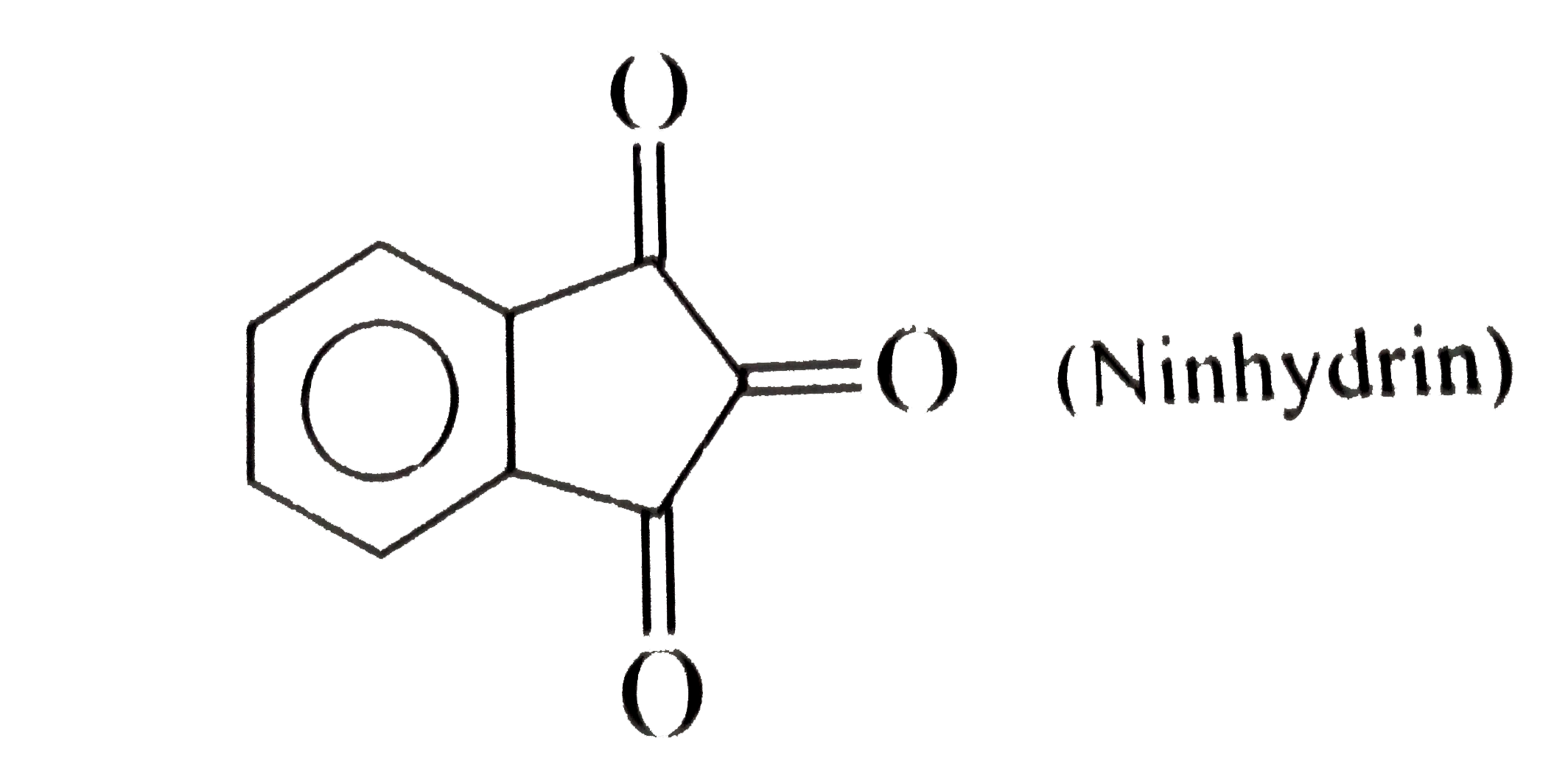
c. Account for the isolation of 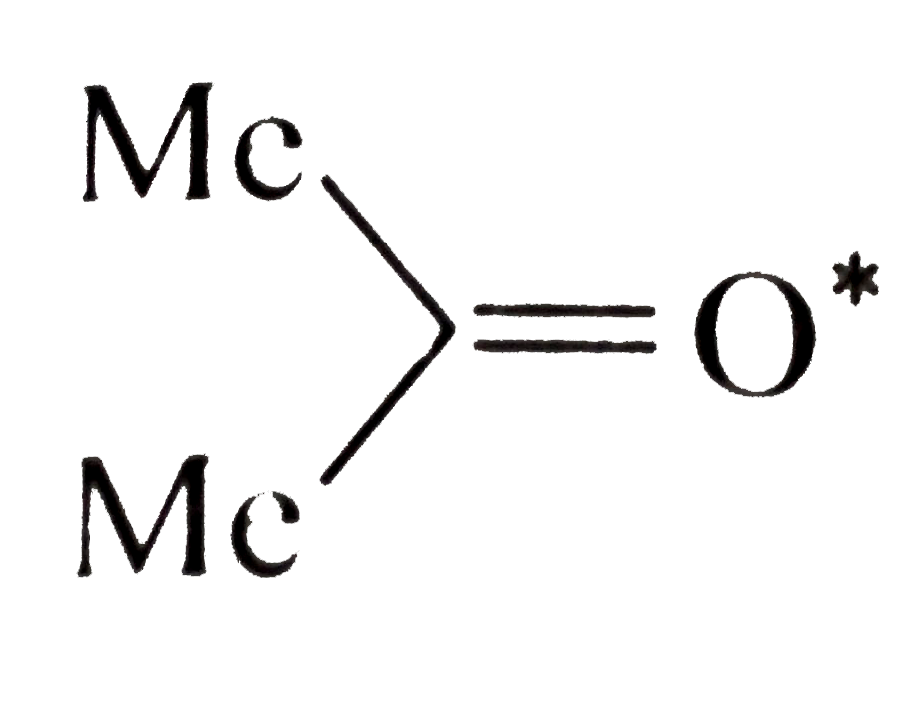 from the reaction of
from the reaction of
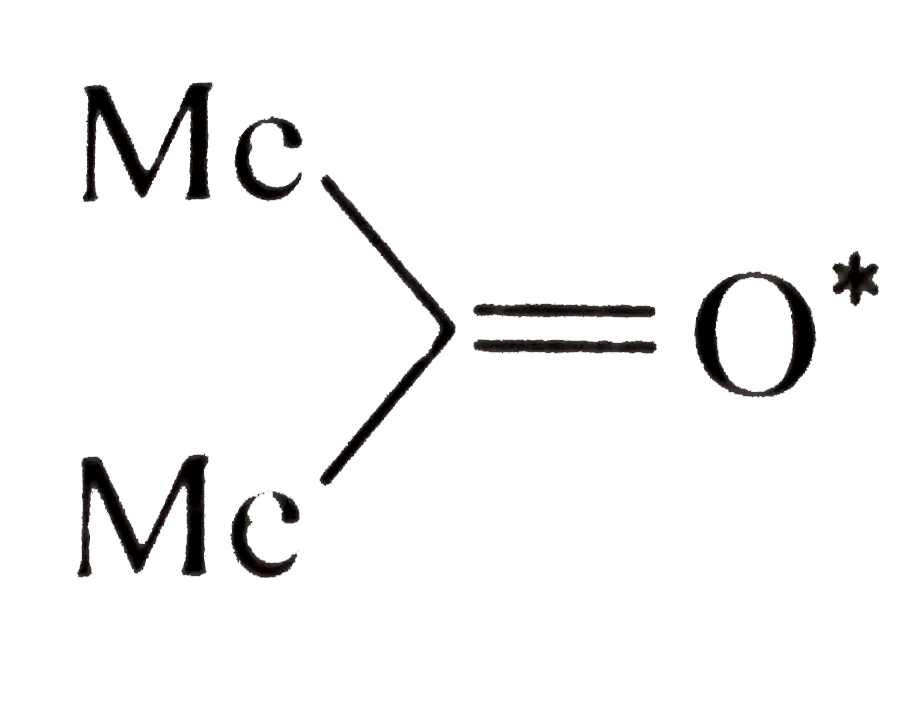 with H2O∗ (O∗ represents O18, isotope of O16.)
with H2O∗ (O∗ represents O18, isotope of O16.)

Video Solution
Text Solution
a. In chloral, strong ¯e− withdrawing Cl atoms on C atom destabilise the carbonyl group due to repulsion between positive charges. The formation of hydrate overcomes the force of repulsion and hence equilibrium lies to the right.
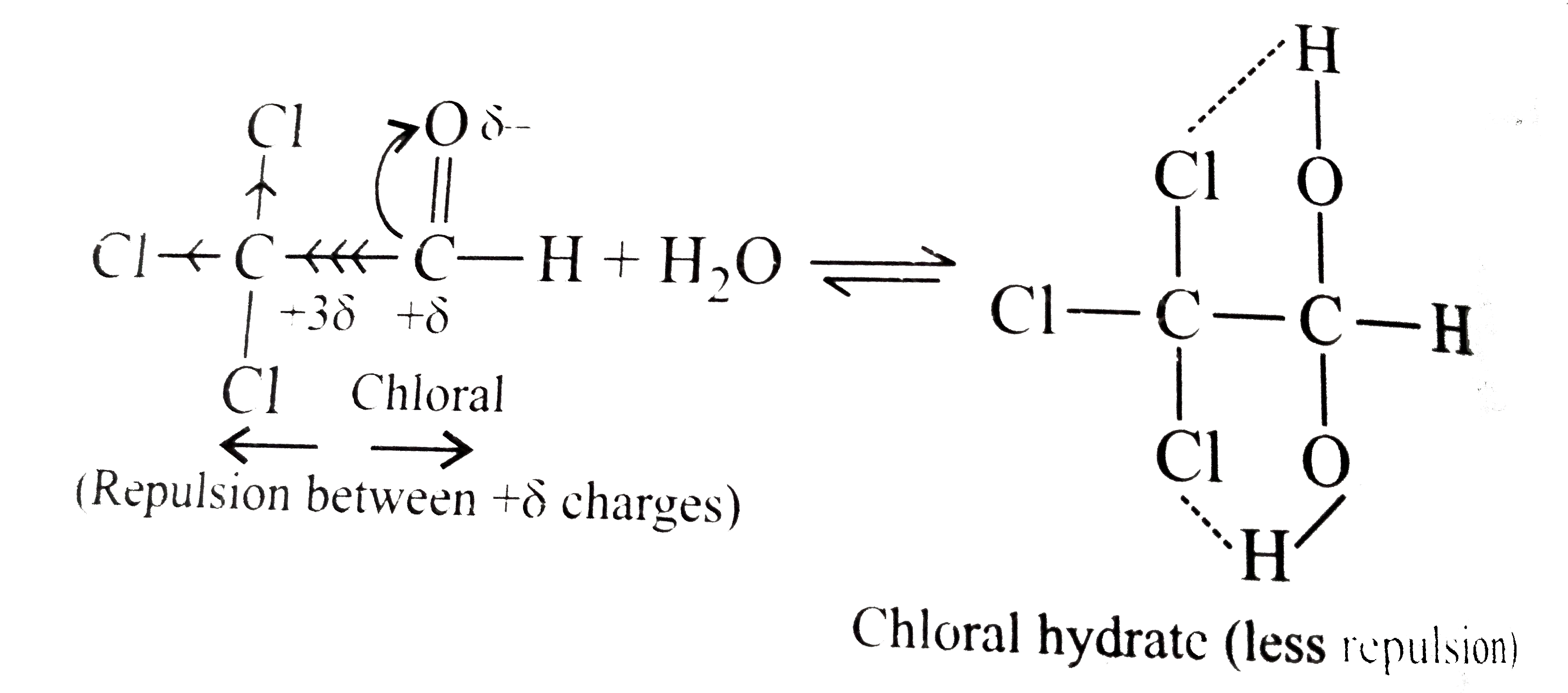
Moreover, intramolecular H−bonding is possible in chloral hydrate [between (−Cl) and (−OH) groups] which stabilises the molecule.
b. The centre (C=O) is hydrated.

The adjacent δ⊕'s are separated by the hydration of central (C=O) group.
If any terminal (C=O) is hydrated, there would be repulsion on the adjacent +δ charges, e.g.,
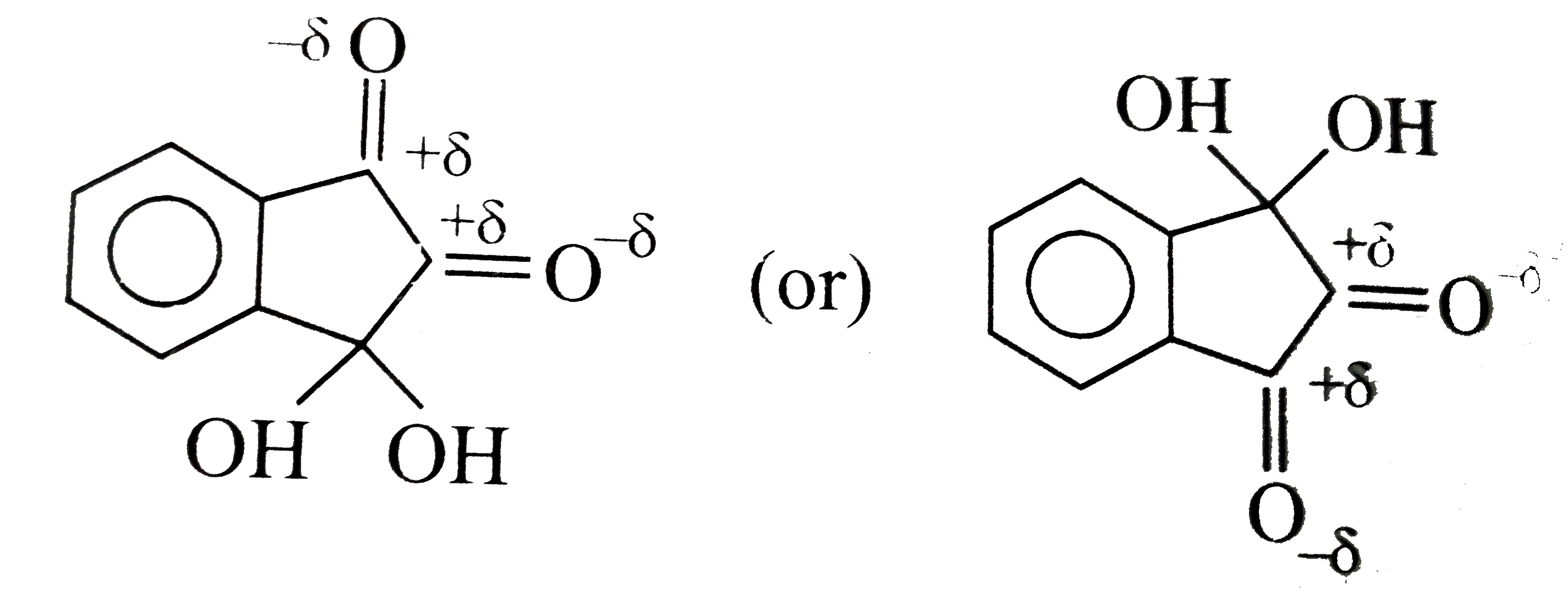
c. 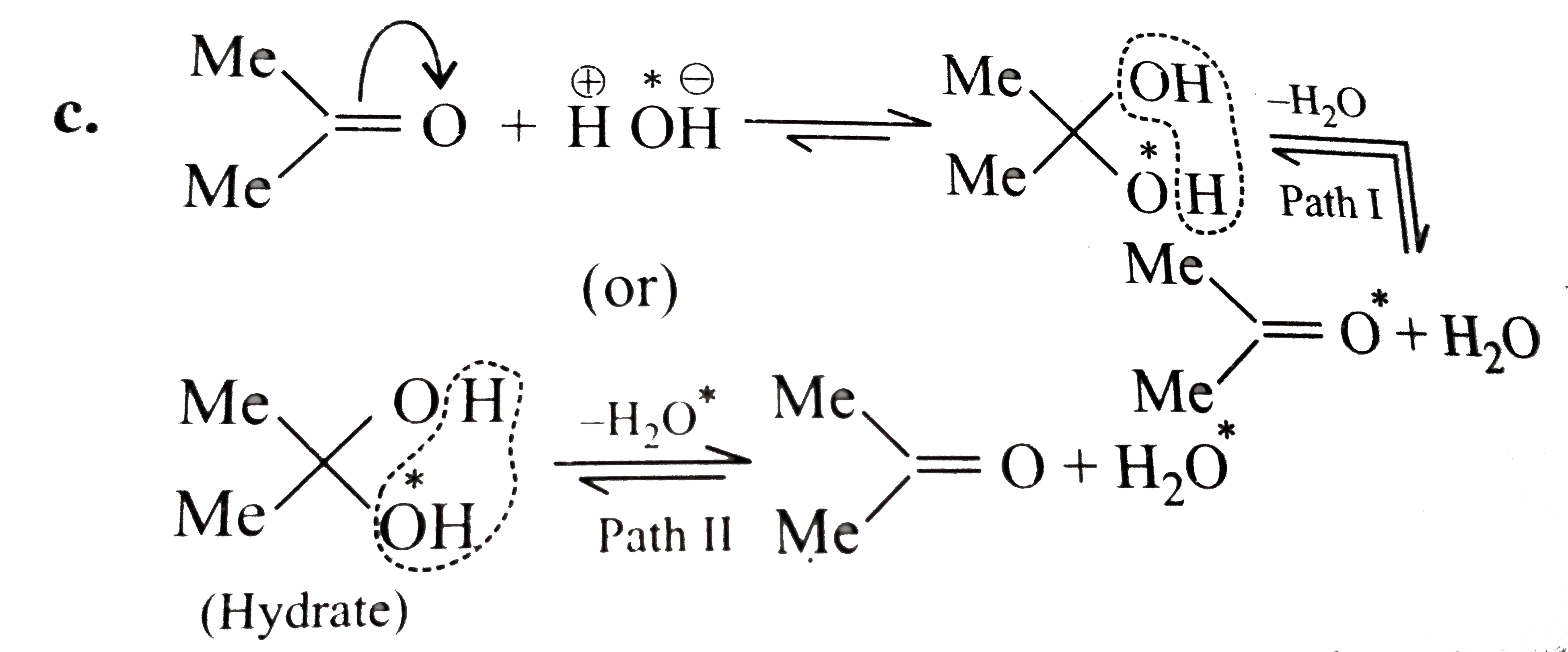
Equilibrium between acetone and its hydrate favours the ketone. When hydrate loses water, Path I is more feasible because (C−∗O) bond is slightly stronger than (C=O) bond.
|
Topper's Solved these Questions
- ALIPHATIC AND AROMATIC ALDEHYDES AND KETONESBook:CENGAGE CHEMISTRYChapter:ALIPHATIC AND AROMATIC ALDEHYDES AND KETONESExercise:Solved Examples
Explore 13 Videos
- ALIPHATIC AND AROMATIC ALDEHYDES AND KETONESBook:CENGAGE CHEMISTRYChapter:ALIPHATIC AND AROMATIC ALDEHYDES AND KETONESExercise:Exercises Subjective
Explore 52 Videos
- ALCOHOL,PHENOL AND ETHERSBook:CENGAGE CHEMISTRYChapter:ALCOHOL,PHENOL AND ETHERSExercise:Archives Analytical And Descriptive
Explore 15 Videos
- AMINESBook:CENGAGE CHEMISTRYChapter:AMINESExercise:QUESTION BANK
Explore 1 Video
Similar Questions
Knowledge Check
Which of the following does not form a stable hydrate on addition of H2O ?
APh−O∣∣C−O∣∣C−O∣∣C−−PhB C
C D
D
Which of the following complex is not hydrate isomer of [Cr(H2O)6]Cl3 ?
A[Cr(H2O)3Cl3].3H2OB[Cr(H2O)5Cl]Cl2.3H2OC[Cr(H2O)4Cl2]Cl.2H2ODNone of theseWhich of the following complex is not hydrate isomer of [Cr(H2O)6]Cl3 ?
A[Cr(H2O)3Cl3].3H2OB[Cr(H2O)5Cl]Cl2.3H2OC[Cr(H2O)4Cl2]Cl.2H2ODNone of these
Explain why phosphotric acid is preferred to sulphuric acid in preparation of H2O2 from hydrated barium perioxide.
View SolutionFor the reaction H2O(s)⇔H2O(l) at 0∘C and normal pressure
View SolutionA reagent which reacts differently with CH2O,C2H4O,C3H6O is
View SolutionA reagent which reacts differently with CH2O,C2H4O,C3H6O is
View SolutionThe given structure of α−amino acid will exist at which pH?
oveset(⊕)NH3−COOH∣C∣R−H
View Solution